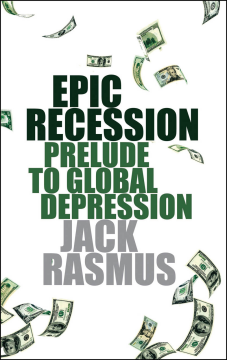
Additional Information
Book Details
Abstract
The 2008 recession left the United States in deep trouble. With unemployment levels approaching 25 million and banks sustained by trillions of government dollars, are governments and economists understanding the crisis correctly?
Examining US economic history, Jack Rasmus reveals how the 2008 global financial crisis is an 'epic recession'. This 'epic recession' is neither a full-blown depression nor a short-lived period of economic contraction, followed by a swift return to growth, instead it demands the radical restructuring of the economy through a massive job creation program, nationalisation, a fundamentally different banking structure and a long-term redistribution of income, through better healthcare and benefit systems.
This is a rallying call for trade unionists and radicals who want to ensure that any recession recovery is felt further than Wall Street.
'Extensive research, thoughtful analysis and articulate writing have created a great book. Jack Rasmus doesn't just talk about the economic catastrophe of the last two years he identifies the problems, the root causes, and offers sound and insightful solutions'
Chuck Mack, International Vice-President, International Brotherhood of Teamsters
Table of Contents
| Section Title | Page | Action | Price |
|---|---|---|---|
| Introduction: Epic Recession—Past, Present, and Prologue | 1 | ||
| Part One Theory | 21 | ||
| 1 Quantitative Characteristicsof Epic Recession | 23 | ||
| 2 Qualitative Characteristics of Epic Recession | 49 | ||
| 3 The Dynamics of Epic Recession | 86 | ||
| Part Two History | 123 | ||
| 4 U.S. Depressions in the Nineteenth Century | 125 | ||
| 5 ‘Type I’ Epic Recession: 1907–14 | 145 | ||
| 6 ‘Type II’ Epic Recession: 1929–31 | 164 | ||
| Part Three Epic Recession, 2007–10 | 199 | ||
| 7 The Epic Recession of 2007–10 | 201 | ||
| 8 The Bush–Obama Recovery Programs | 245 | ||
| 9 An Alternative Program forEconomic Recovery | 284 | ||
| Glossary of Key Terms | 315 | ||
| Notes | 320 | ||
| Index | 336 |
